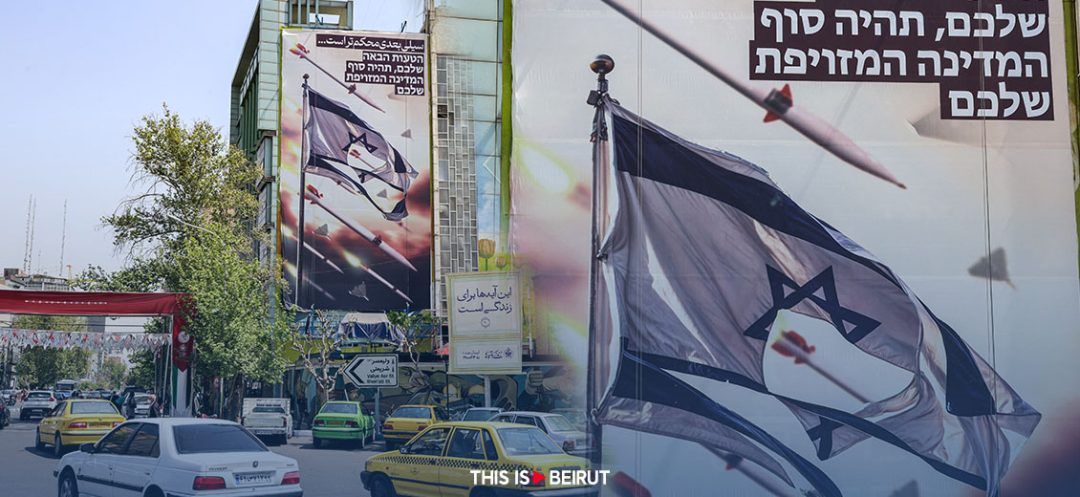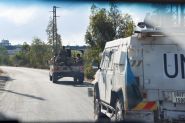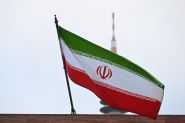- Home
- Middle East
- Iran Retaliates, Israel Tests Its Capabilities

The Lebanese are just as divided regarding Iran’s retaliatory attack on Israel. While some see it as a sham, others perceive it as a victory. The latter viewpoint is echoed by many supporters of the Axis of Resistance.
From a military standpoint, the arsenal used by the Iranians was extensive, amounting to 300 drones, cruise missiles and ballistic missiles. Nevertheless, reports indicate that only seven out of the 300 missiles that were launched successfully hit targets within Israel. This suggests that the attack failed to achieve all of its intended objectives and did not inflict significant damage on Israeli military infrastructure, especially its air force capabilities. The facts have pointed out that Israelis and their allies were well-informed—and ahead of time—of the scale of Iran's retaliation. Therefore, they prepared adequately, especially given the fact that Israel, the United States and the United Kingdom have significant aerial leverage, allowing them to intercept the missiles and drones as they made their way from Iran, Iraq and Syria. In addition, the high aerial expertise facilitated precise monitoring and interception at the right timing and location. In this context, it is noteworthy to specify the travel time (from Iran to Israel) of the missiles: six hours for the drones, two hours for the cruise missiles, and 12 minutes for the ballistic missiles. Furthermore, this Iranian offensive served as a prime opportunity for Israel and its allies to assess their know-how in intercepting both drones and missiles.
On the other hand, this attack was also an opportunity for Tehran to gauge its missile and drone capabilities and to evaluate the effectiveness of evading interception technologies. A military expert noted that the Iranians may have either failed in their attack tactics or intentionally avoided causing significant damage to Israel. Launching larger waves of drones and missiles would have likely triggered responses from Israeli and allied defense systems, which did not happen.
The Israelis qualified the Iranian attack as a failure, while Iranians claimed that it achieved its objectives. Noticeably, this attack took place more than six months after the beginning of the Al-Aqsa Flood operation, a conflict in which Tehran avoided direct involvement and pushed its proxies to do the job.
This implies that the Iranian attack wasn't driven by support for Hamas, but rather by Tehran's desire to overcome a lingering embarrassment: its failure to retaliate against Israeli strikes in Syria and Iran. To avoid becoming a model of indecisiveness and weakness, Tehran had to save face in the eyes of not only Israel but its allies.
From a military standpoint, the arsenal used by the Iranians was extensive, amounting to 300 drones, cruise missiles and ballistic missiles. Nevertheless, reports indicate that only seven out of the 300 missiles that were launched successfully hit targets within Israel. This suggests that the attack failed to achieve all of its intended objectives and did not inflict significant damage on Israeli military infrastructure, especially its air force capabilities. The facts have pointed out that Israelis and their allies were well-informed—and ahead of time—of the scale of Iran's retaliation. Therefore, they prepared adequately, especially given the fact that Israel, the United States and the United Kingdom have significant aerial leverage, allowing them to intercept the missiles and drones as they made their way from Iran, Iraq and Syria. In addition, the high aerial expertise facilitated precise monitoring and interception at the right timing and location. In this context, it is noteworthy to specify the travel time (from Iran to Israel) of the missiles: six hours for the drones, two hours for the cruise missiles, and 12 minutes for the ballistic missiles. Furthermore, this Iranian offensive served as a prime opportunity for Israel and its allies to assess their know-how in intercepting both drones and missiles.
On the other hand, this attack was also an opportunity for Tehran to gauge its missile and drone capabilities and to evaluate the effectiveness of evading interception technologies. A military expert noted that the Iranians may have either failed in their attack tactics or intentionally avoided causing significant damage to Israel. Launching larger waves of drones and missiles would have likely triggered responses from Israeli and allied defense systems, which did not happen.
The Israelis qualified the Iranian attack as a failure, while Iranians claimed that it achieved its objectives. Noticeably, this attack took place more than six months after the beginning of the Al-Aqsa Flood operation, a conflict in which Tehran avoided direct involvement and pushed its proxies to do the job.
This implies that the Iranian attack wasn't driven by support for Hamas, but rather by Tehran's desire to overcome a lingering embarrassment: its failure to retaliate against Israeli strikes in Syria and Iran. To avoid becoming a model of indecisiveness and weakness, Tehran had to save face in the eyes of not only Israel but its allies.
Read more



Comments